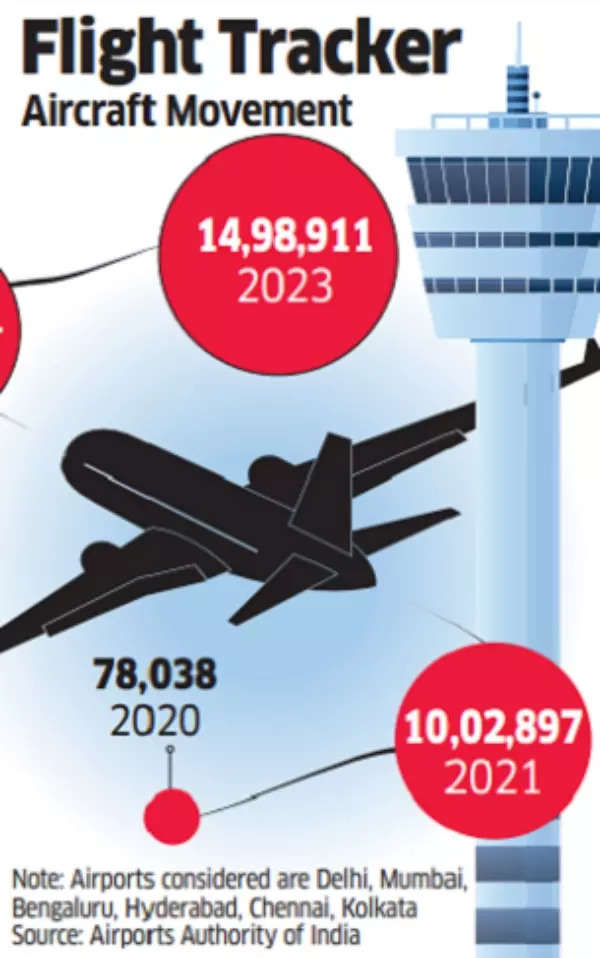India prepares for ‘One Airspace’: Unified air traffic control plans set in motion – what it means

[ad_1]
Officials told ET that this strategic move is expected to optimize air traffic management, benefiting airlines through cost savings and improved safety measures.The Airports Authority of India (AAI) has initiated the process by inviting bids from consultants to obtain technology from global companies and implement advanced technology solutions for a single air traffic management system.
The comprehensive program, projected to span over eight years, includes infrastructure development, controller training, and migration to the new system. Once fully operational, the unified airspace strategy will enable airlines to identify more efficient flight routes, resulting in reduced travel time and fuel consumption. By facilitating consistent flight patterns at higher altitudes and smoother descents for landing, the initiative aims to enhance operational efficiency.

Flight tracker
Senior air traffic control officials emphasized the current challenges of coordinating flights across different regions and the anticipated simplification with the centralized control in Nagpur. “Currently, when an aircraft passes over the Indian region, the controllers have to hand it over to the other region, which includes a lot of coordination especially over busier air routes,” an official was quoted as saying. “Once a single unified sky is achieved, almost 75-80% of controllers will be based in Nagpur, reducing the need for coordination, leading to less stress and fatigue. Single coordination also allows restructuring of air routes, opening up more fuel-efficient routes for airlines,” the official said.
Also Read | Indian Railways’ big 100-day plan: Vande Bharat sleeper, bullet train, J&K rail project with Chenab bridge & more – check details
This shift is expected to significantly reduce coordination efforts, alleviate stress, and enhance operational fluidity for pilots as well. Pilots welcomed the initiative, noting that it would streamline communication processes and reduce cockpit workload. The unified airspace management system will provide pilots with advance information on altitude and routing, enabling smoother transitions across regions and minimizing the need for frequent radio frequency changes.
“You get to know your altitude, routing well in advance and if you are flying above 25,000 feet, you can overfly with complete radio silence without seeking multiple clearances and reducing communication with the ATC (air traffic control),” a senior commander was quoted as saying.
The decision to enhance airspace efficiency aligns with the growing demand for air travel in India, as seen by the substantial increase in aircraft orders by domestic carriers. Civil aviation minister Jyotiraditya Scindia has in the past highlighted the significant growth in the Indian aviation sector, with projections indicating a doubling of the current aircraft fleet in the next five years.
Also Read | Flight delayed after boarding? New rule offers big relief to flyers stuck inside aircraft
The Airports Authority of India has already embarked on phased initiatives to modernize airspace control, including the restructuring of regional divisions. The integration of the Northeast region into the Kolkata division in 2021 marked a significant step towards centralized airspace management. The AAI’s investments in radar technology, such as the automatic dependent surveillance-broadcast (ADS-B) transponders, have enhanced aircraft monitoring capabilities and surveillance coverage.
Senior AAI officials emphasized the technological advancements in radar systems and automation, underscoring the improved surveillance capabilities and seamless integration of surveillance data. The modernization efforts have equipped the airspace with reliable monitoring systems, facilitating efficient air traffic control operations across the country.
#India #prepares #Airspace #Unified #air #traffic #control #plans #set #motion #means





